Shiva Nataraja – The Hindu Lord of the Dance. Iconography and Symbolism
Nataraja, the manifestation of the Hindu god Shiva as the Lord of the Dance, holds a profound significance in Hindu mythology and symbolism. Depicted...
Maya M. Tola 3 June 2024
Feudal Japan experienced many social upheavals and turbulences. This highlighted the need to be combat-ready for everyone, including women. Hence, onna-musha and onna-bugeisha appeared. The first ones were trained in offensive warfare and the latter in defensive. Onna-musha were fierce warriors who went to the battles and fought along with the samurai. Onna-bugeisha were trained to protect their homes and lands from intruders and attackers while their husbands were at the battlefront.
Chronologically, feudal Japan coincides with the Medieval Ages in the European continent. It was a time full of social turmoil, as the different Japanese clans fought one another for political power. Whenever the daimyo, the ruler, changed, the losing clans turned to violence and caused trouble. The social distress worked as fuel for numerous rebellions between the bushi; that is those who had adopted the “True Pure-Land Buddhism.”
This sect did not attract only bushi members. Lower-rank samurai, village headmen, and small landowners also joined it. They all formed something of an alliance, called Ikko- ikki, a single-minded league. One of the most common tactics was to riot against the higher ranks to balance their influence. Thus, conflicts between the feudal provincial government and Ikki were so common that it made sense for women to learn defensive skills. They had to learn how to protect their homes and lands when their husbands were at war. Women also learned combat skills and tactics at times, becoming the famous onna-musha.
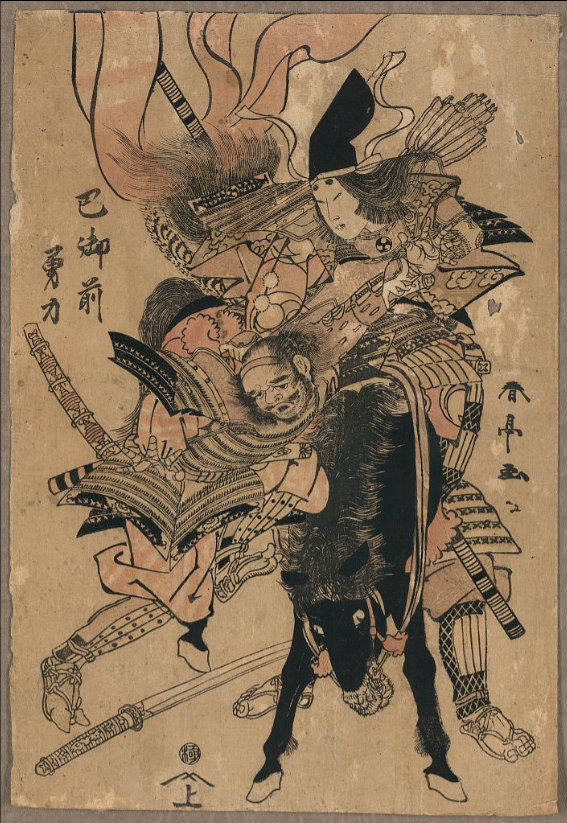
Katsukawa Shuntei, The Powerful Tomoe Gozen, between 1804 and 1818, Library of Congress, Washington, DC, USA.
One cannot list all the onna-musha and onna-bugeisha, as resources have been destroyed over time. Yet, it wasn’t surprising when a woman joined the military forces back then, as social rank was far more important than gender. Let’s see some of the most famous onna-musha in history.
Tomoe Gozen is probably the most famous onna-musha in Japanese history. She participated in numerous battles of the Genpei Wars between the Minamoto and Taira clans during the 12th century. Lady Tomoe, as she was addressed, was known for her expertise in horsemanship, her legendary skills in archery, and her bravery in battle.
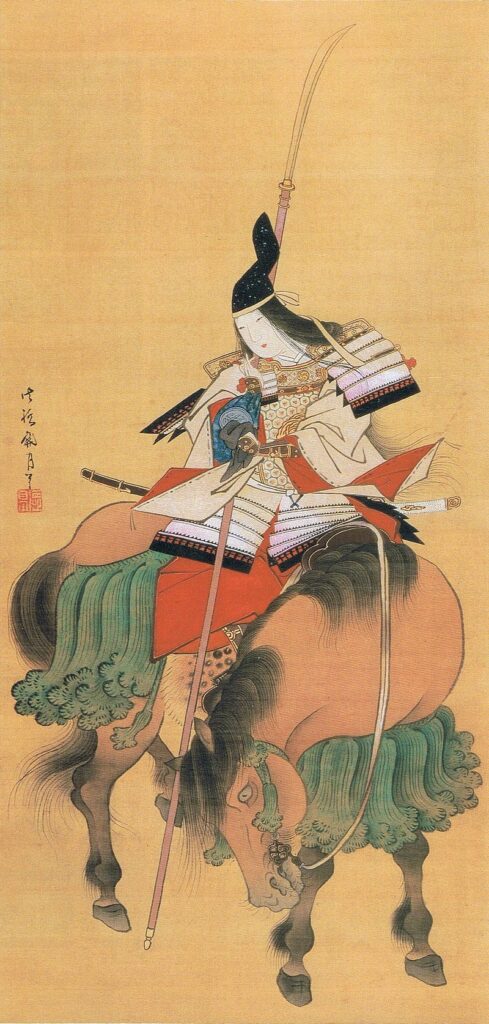
Kangetsu Shitomi, Tomoe Gozen on horseback. Collection of Tokyo National Museum. Wikimedia Commons.
[Tomoe Gozen] was a powerful fighter, the equal of a thousand, capable of dealing even with demons or gods.
Warriors of Japan as portrayed in the War Tales. University of Hawaii Press, 1994, p. 104.
Lady Tomoe was the servant and lover of General Minamoto Kaneto Kiso Yoshinaka. As Yoshinaka competed for political power with his cousin, Minamoto Yoritomo, Gozen joined Yoshinaka in war as his leading commander. Even though some sources believe she was a legendary figure, others state historical facts regarding her existence. However, one thing is common in all stories: Tomoe Gozen was the strongest onna-musha of all time.
Hangaku Gozen, also known as Hangaku Itazaki, was a member of the Taira clan in the Echigo province. Although not an onna-musha, but an onna-bugeisha, Hangaku showed impressive bravery and leadership during the three-month defense against Sasaki Moritsuna’s army, who had sworn their loyalty to the Kamakura Shogunate.
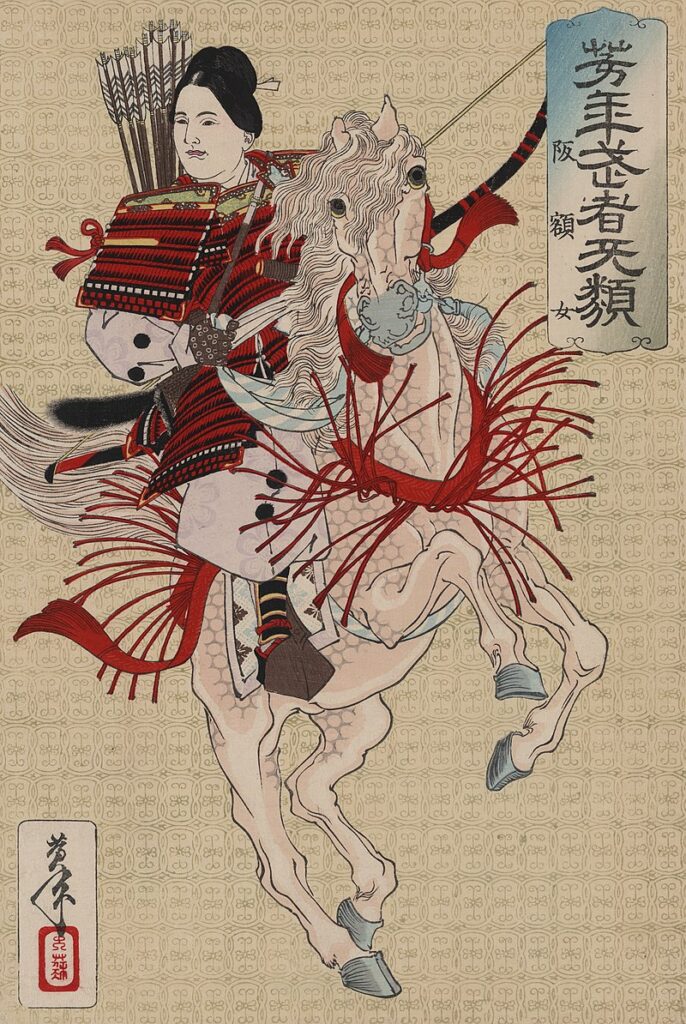
Yoshitoshi, Hangaku Gozen, ca. 1885. Collection of Tokyo National Museum, Tokyo, Japan.
Hangaku dressed like a man in battle and waited for her opponents to reach close enough so that she could pierce them with her arrows. She did not stop until her opponents were defeated and she was wounded in her thigh by an arrow. It was only then that she was captured and, as a war prisoner, was taken to Minamoto Yoriie. Minamoto was fascinated by her beauty and fierceness and did not allow her to pursue the suicide ritual. He gave orders for Hangaku to marry his most trustworthy servant, Asari Yoshito. Hangaku reportedly gave birth to a son but little is known regarding the remainder of her life.
Tsuruhime was born to a highly prestigious family on the island of Ōmishima. She lived during the years 1526 – 1543, during the conflict between her clan, the Kono, and the Ouchi clan, who battled for dominance over Ōmishima. Due to this, she had trained in martial arts since childhood. Tsuruhime was not an ordinary onna-musha, as she believed she was the manifestation of the island’s guardian kami (deity), Mishima Myojin. Hence, Tsuruhime believed it was her divine duty to protect her people and Ōmishima for the Kono clan.
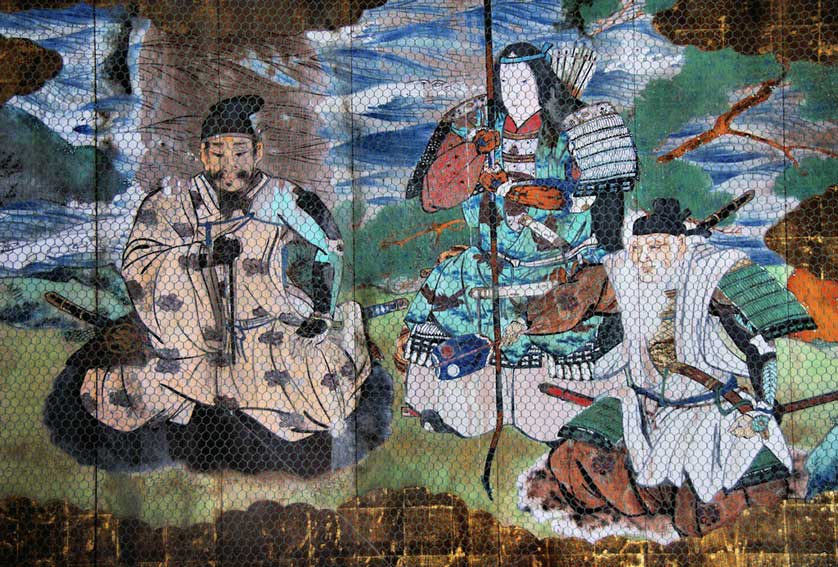
Tsuruhime in Armor. Japan Experience.
She managed to defeat the Ouchi clan but she died by ritual suicide in 1543, when she was 18 years old, as her lover was defeated in battle. Her armor was enshrined at the Oyamazumi Temple and over the years, it became a religious treasure and an icon of worship.
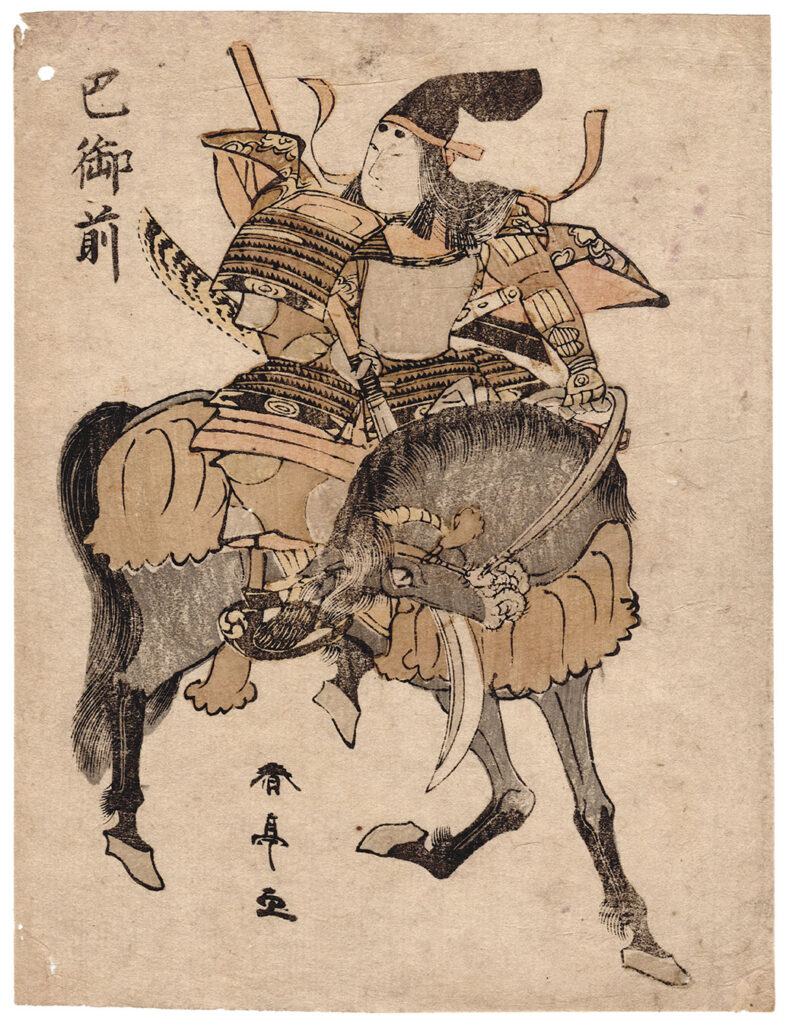
Katsukawa Shuntei, The Female Samurai Tomoe Gozen, 1804-1843, woodblock print. Miwa Japaneze Art.
Onna-musha became a common theme for the ukiyo-e woodblock prints. Artists, such as Tsukiota Yoshitoshi, Katsukawa Shuntei, and Toyohara Chikanobu painted them in full armor, holding the naginata (the polearm) or a bow. Of course, these prints were centuries after the onna-mushas’ existence, and by then, the female warriors were already legendary.
Yet there are depictions of onna-musha, even in the 11th century. However, direct evidence is extremely rare, as most artworks were destroyed during wars. Therefore, we cannot know for sure the names or even how many onna-musha there were.
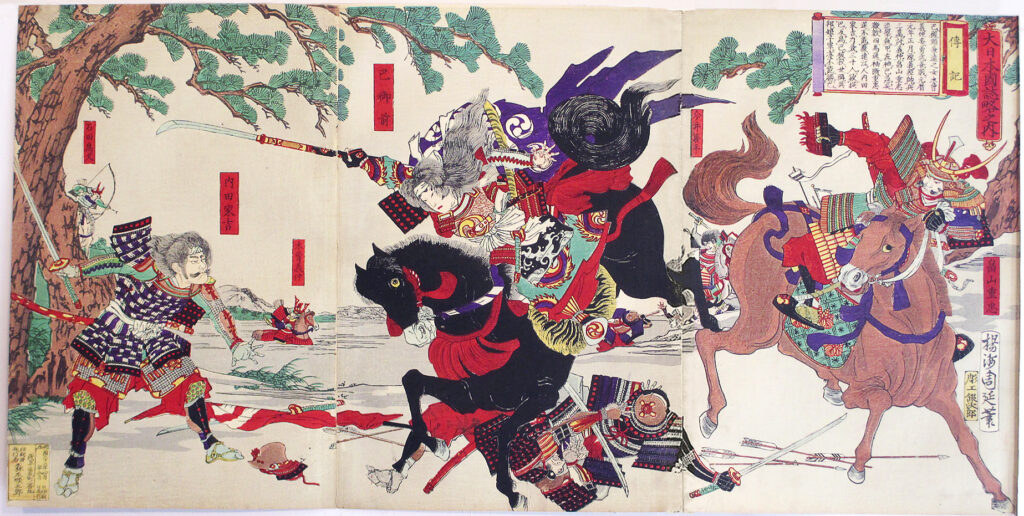
Toyohara Chikanobu, Tomoe Gozen with Uchida Ieyoshi and Hatakeyana no Shigetada, 1899, woodblock print. Wikimedia Commons (public domain).
DailyArt Magazine needs your support. Every contribution, however big or small, is very valuable for our future. Thanks to it, we will be able to sustain and grow the Magazine. Thank you for your help!